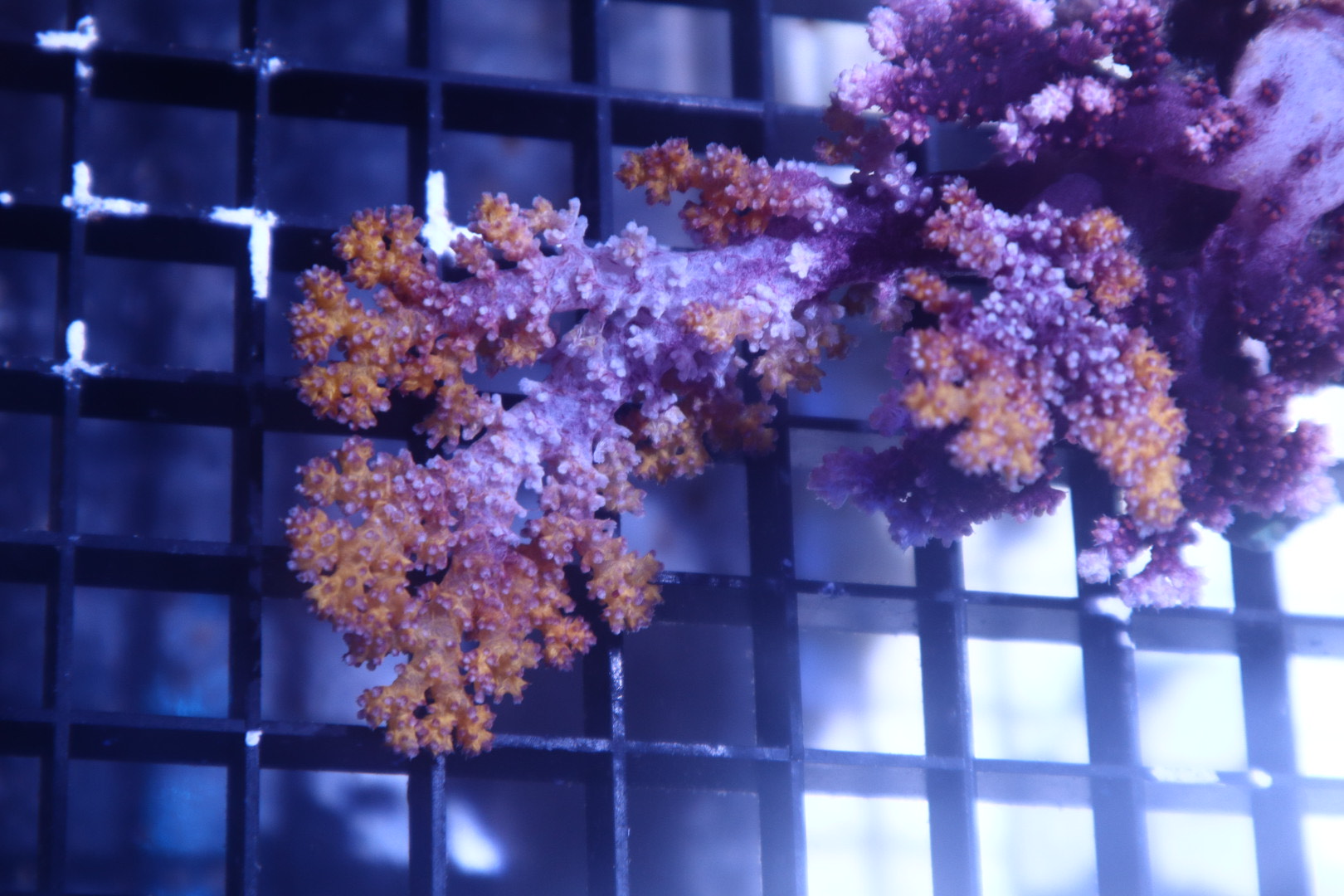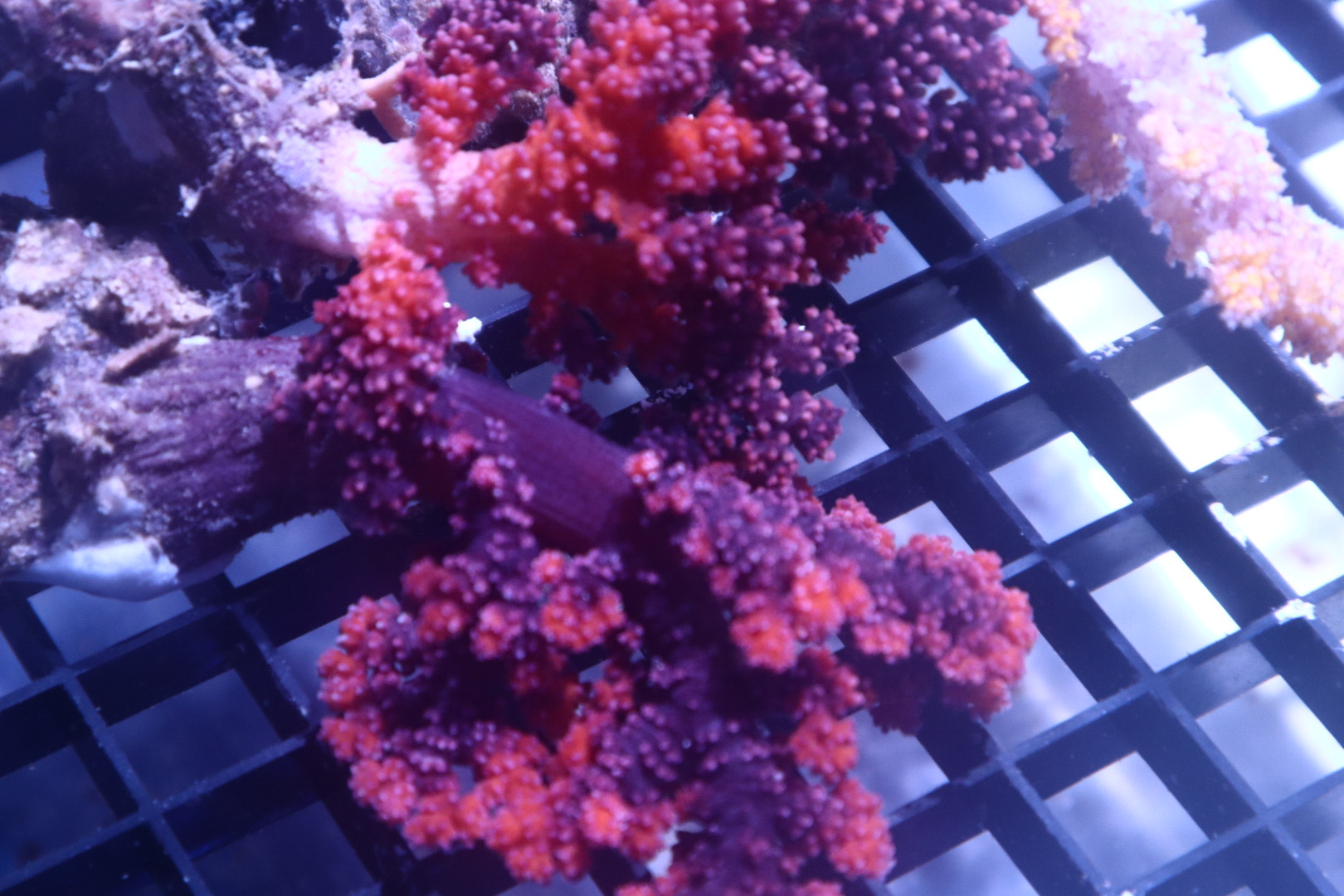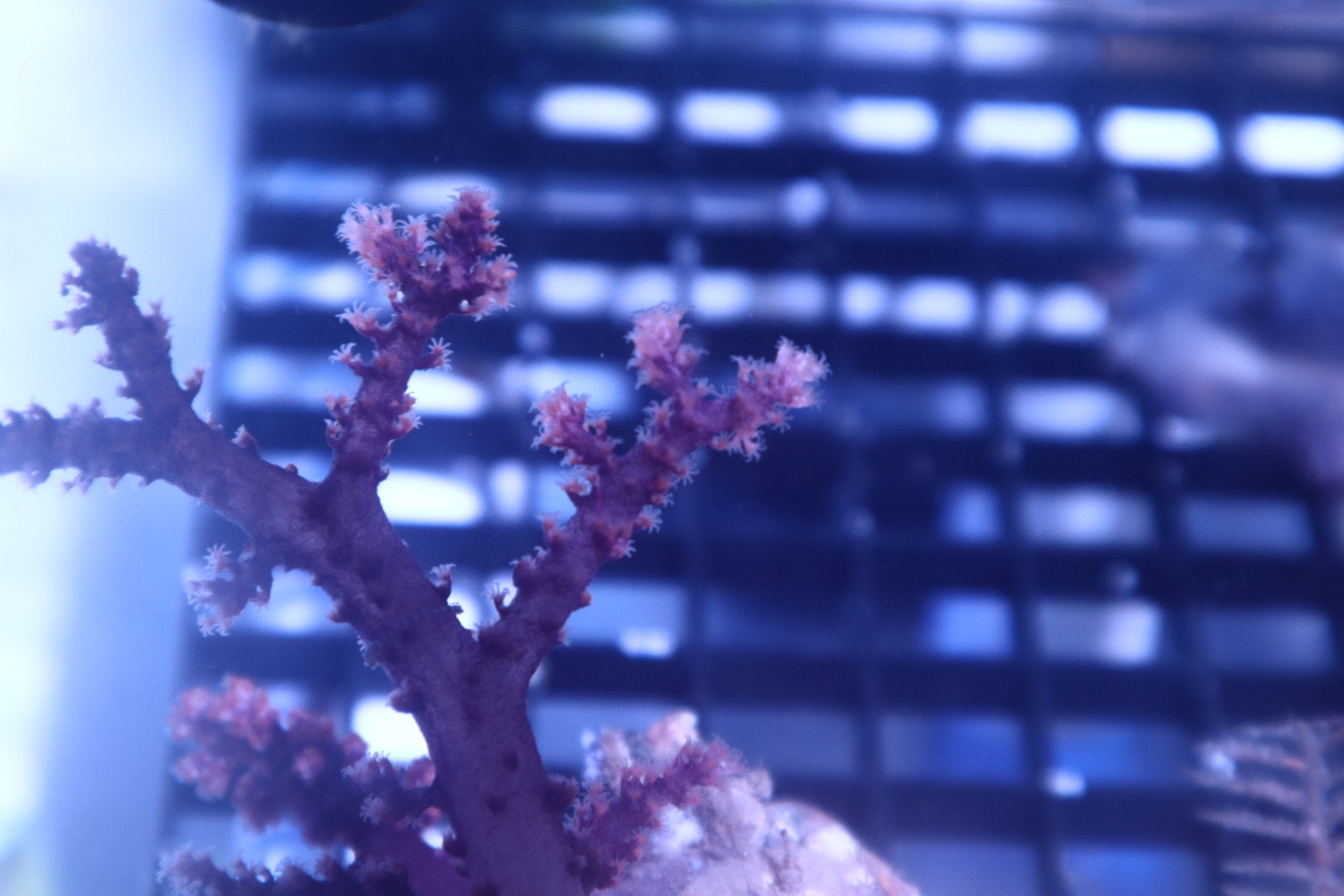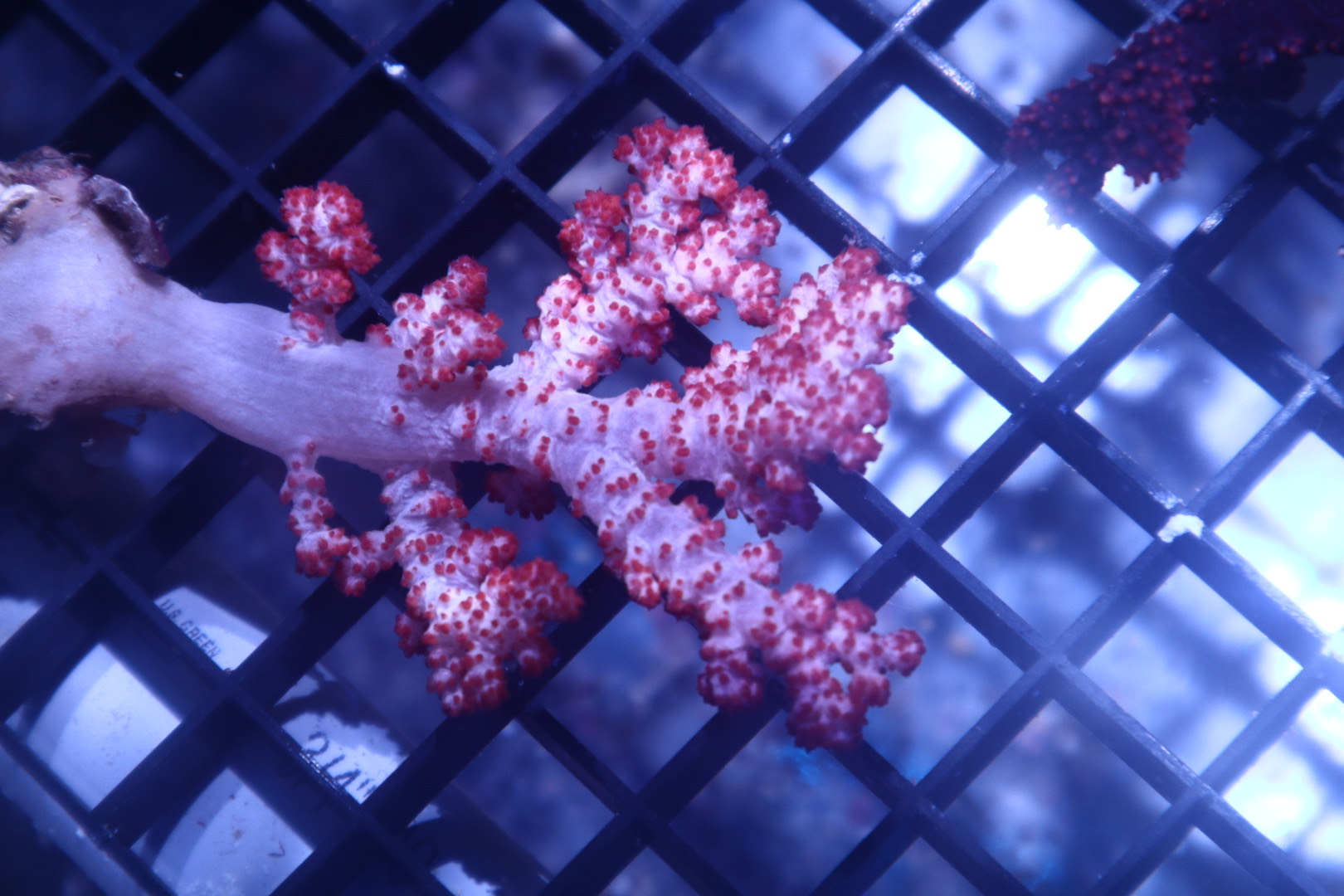We have all seen our fair share of soft and azooxanthellate corals in the hobby, but this one is definitely different. Not much is known about Chromonephthea as they rarely make it into the hobby. The specimens pictured were imported from the Northern Territory of Australia and are possibly the first of its genus to make landfall in the United States. When we first received them at QGI Aquatics, I was blown away by the amazing colors these soft corals had.
Immediately, I knew they were a species I hadn’t seen in person before, and I could barely contain my excitement. The late Jake Adams and I had chatted about Chromonephthea once or twice before his passing, and here it was before my eyes. After Jake passed, I completely forgot about this coral until it literally showed up on a recent Australian coral shipment at my place of employment. It took me a while to figure out what it was. Its odd shape and the stiffness of the coral definitely deterred me from thinking it was a Dendronephthya.

Chromonephthea
After conversing with some of my colleagues and friends in the industry, I finally realized this was Chromonephthea. As soon as I realized this, I immediately took a couple of specimens home so I could closely observe them and see how well they would do in a mixed reef. To this day, it has been about two months since I added a couple of these beauties to one of my reef tanks at home. They are doing well and have actually shown some growth. My excitement hasn’t changed since the moment I laid eyes on them, and I continue to be excited to see what happens as they continue to grow and flourish.

Feeding
Caring for these corals can be tricky so I would not recommend just any aquarist giving these a go if they aren’t ready for a challenge and able to provide the proper care. My specimens get fed three times a day with a good mixture of Reef Nutrition products including their TDO A which is the smallest size granule pellet they offer. (TDO A being of only 75-250 microns.) The small size makes this food easier for the Chromonephthea to consume. Other products I use for these specimens include Oyster Feast, Phyto Feast, and Roti Feast; these products are also from Reef Nutrition. Although there are many other options on the market for feeding corals, these are what I personally use to feed these specimens as I have found them to be very beneficial over the years.
Target feedings are a good way of feeding this species if in a normal reef tank, but I personally prefer broadcast feeding due to all the other Azoox corals in this specific system they are in.

Flow
Many people may ask if they need to hang these corals if they get their hands on them; the answer is no. If you provide any carnation corals with adequate flow or have a tank where you get an “upwelling” current that will help keep your coral elevated, that would be the place for a specimen like these Chromoneonephthea. With an upwelling current, meaning a flow that updrafts from a lower part of your tank pushing water upwards, encouraging the Chromonephthea or other carnation species to open up out into the current to feed like they do in the wild.
Now, since I don’t have the equipment to look closely at the polyps to see what these Chromonephthea are actually feeding on, it can make things tricky. Just because its polyps are closing around captured foods, it does not necessarily mean the specimen is consuming it. This fact is why I choose and recommend others to feed a wide variety of foods to your specimens. Doing this gives you the best chance at a happy, healthy coral and causes them to look their best and be the healthiest they can be in your tank environment.
As of now, very little is still known about this coral. As time goes on, I will be paying close attention to the behavior of this coral and will closely observe its habits. Only a couple of other people in this industry currently have these in their possession, and I plan to be in close contact with those few individuals as time goes on so we can compare notes and offer suggestions and advice to each other. I certainly wish I could be sharing one of these corals with Jake; I think he would have been so thrilled to finally see these corals make it into the industry.

Availability
At the time of writing this article, QGI Aquatics out of Clearwater, Florida still had a few specimens available for wholesale to retail stores. We plan to import more of these Chromonephthea and cannot wait to see how these corals do in the home aquarium.

About the Author
Levi Peterson specializes in NPS corals and has a passion for other oddball corals that make their way into the hobby. He is the coral specialist at QGI Aquatics in Clearwater, FL. He is known online online as “The Oddball Reefer” on Instagram and YouTube.



